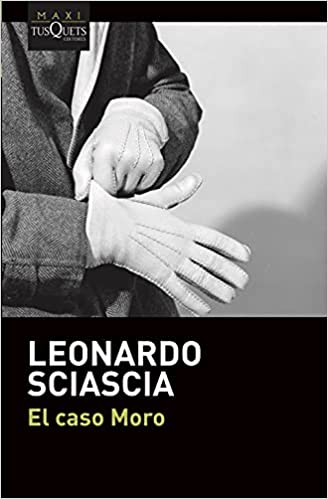Practicing on many occasions a black gender Purely Italian, with ramifications on gangster aspects, Sciascia focused on his literary work much of that vital expression of the intense narrator that reaches the lyrics as a necessary creative atonement.
In his intense evolution through letters, Sciascia found in his contemporary and also Sicilian Camilleri a reference, a support, a friend and also one of those opponents in a world of letters always prone to disputes and rises in tone that, in the case of two pro sicialianos, could reach unimaginable limits.
But the matter would always remain anecdotal at that crossroads in a police genre in which Camilleri finally turned out to be surely more internationally recognized.
In that mix between the writer's ego struggle and the inescapable friendship for proximity, both authors managed to develop a prolific career that is a pleasure to explore. In the case of Sciascia for its versatility between genres, including an interesting transition between the most general blocks of fiction and non-fiction.
Top 3 recommended books by Leonardo Sciascia
The Moro case
One of the books that has the greatest impact on Sciascia's bibliography is this kind of short novel, a chronicle taken from one of the black episodes in 60th century Italy, the death of the politician Aldo Moro. His assassins were heirs to that increasingly unfocused revolution of the XNUMXs in Italy and virtually all of Europe.
The Red Brigades and more specifically its leader Mario Moretti removed from the middle one of the most important politicians of wealthy Italy in the mid-XNUMXth century, nothing less than a former prime minister of the republic who, apparently from this organization of proletarian evocations It was an emblematic enemy in whose death it was possible to recover the image of the ancestral struggle between workers and capital.
Sciascia was part of the commission that investigated the death of the politician and his pulse did not tremble to tackle this book in full swing, with the matter so hot that it could have exploded in his hands. And of course every book about a murder ends up looking in part to a crime novel and in part to a praise for the real deceased. From the letters written by Moro himself, Sciascia composed that story half estrangement of the confined man and aimed at his assumed execution, half black chronicle of the dark days of Italy that, like almost every good country of European roots, always faces the monsters of their civil polarization.
The day of the owl
Sciascia's black genre is perhaps more of a crude realism, a chronicle of the sordid towards the final representation of the human from its naked miseries. I say this because this novel in an environment so typical of the author happens to be that projection to the Macondo of every author determined to tell what his own essence has forged. There is something curious easily observable in the human being. We learn better from the bad than from the good. The bad example seen only once penetrates more than the repetition of the good emphasized over and over again. From that impression this plot progresses ...
In the square of the Sicilian town of S., Salvatore Colasberna, a partner in a small contractor company and a former bricklayer, is assassinated as he is about to board the bus heading to Palermo. Passengers rush to flee, and no one has seen anything, or so they say. But the circumstances of his death seem increasingly complex and the mysterious disappearance of the peasant Mendolìa may be related to the case.
The young captain of the C. carabinieri, Bellodi, a former partisan from the city of Parma, will be in charge of carrying out the investigation and of breaking the leaden silence of an entire society with his determination. His lucid investigations can lead him to a dead end or distance him forever from his ideals of justice after discovering the serious political and economic implications of the mafia network that omertà protects.
The wine-colored sea
It never hurts, in a pen prone to variability such as Leonardo Sciascia's, to stroll around other spaces inhabited by his pen. And the story is always an important change of register, although it may not seem so because it always places us within fiction, because it is considerable, due to its very disparate bill, how the author is able to rethink resources, reinforcing that intensity of the brief or looking for that brilliance of simplicity, of the fleeting scene full of doubts towards open endings… In El mar color de vino –the story that gives its title to this volume of stories–, the engineer Bianchi, an Italian from the north, travels for the first time to Sicily.
In the train compartment he will meet a typical island family: a couple of teachers, who do not stop talking or pestering the traveler, with their children, cheeky and restless, and the young woman who travels with them, reserved and shy but perceptive; the engineer, attentive to the reality that unfolds before his eyes, will sharply analyze Sicilian society and its contradictions ...
In 1973, Sciascia himself selected, from among his stories written between 1959 and 1972, these xxx stories to make, in his own words, "a kind of summary of what my activity has been up to now, which shows (and not hidden that I feel satisfied to a certain point, within my most general and constant dissatisfaction) that in these years I have followed my path ... and that between the first and the last of these stories there is a kind of circularity, which is not that of the whiting that bites its tail ».



